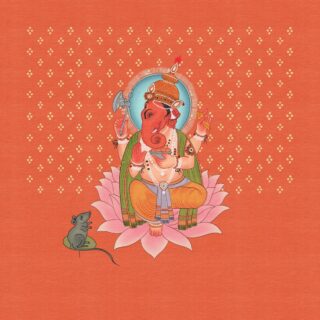Thangka painting originated from the nest of Himachal, Sikkim, which has won hearts and attention with a single arrow around the world. It is still present in Sikkim, Himachal Pradesh, Arunachal Pradesh and Ladakh. Curated with rich cultural and vibrant colours, Thangka paintings have set out to transform artistry with its significant contribution to India’s commendable art heritage. Thangka paintings are remarkable epitomes of art that capture the blend of the spiritual realm in a magical way. Let’s embark on a journey to unveil the majestic story behind the Thangka painting.
Learn Everything You Need To Know About Thangka Painting
Art has always been a great medium to convey emotions, religious beliefs, and other mythological stories. The Thangka painting commenced with precision, intrinsic details and passed a significant element that the generations to come would always cherish. Thangka art has an immense pivotal role in Sikkim’s monasteries.
Let’s Unwrap Thangka Painting
What Is Thangka Painting?
The word ”Thangka” derives from the Tibetan language and means ”recorded message”. It can also be translated as “thing that unrolls”. Thangka art came into existence primarily to communicate through all the language barriers. Thangka art captured and conveyed the religious significance of Buddhism and Hinduism deities.
In previous times, the enlightened beings called ” Boddhisatavas“ used to travel all around the globe and spread Buddhism to its core. This painting is usually done in cloth to preserve it for a long time. Another thing that makes Thangka’s painting stand out is its meticulous intrinsic process of indulging divinity into art, passed down through the ages.

History Of Thangka Painting
The evolution of Thangka painting dates back as far back as the ancient cave painting times. The transformation of the Thangka painting, designed on walls and cloth, was revolutionary. The magical impact of Thangka painting dates back to the 7th century in Nepal when Buddhism was at its peak.
To spread the word of Buddhism all across the world, Thangka painting was a mesmerising medium to connect you with the spiritual realm on the other side. The culturally rich art masterpiece leaves everyone in awe with its intrinsic designs. Additionally, Thangka art was mainly made of silk or any cloth. It is also a significant element in Buddhism to this date.

Significance Of Thangka Painting
One of the pivotal mediums through which the stories of Buddha became well-known to the world was the Thangka painting. It is used for religious as well as to enrich any space. It is important to note that Thangka painting play a crucial role in devotional events.
It helps you to mediate and connect with your higher self. For the same reason, you can find the most otherworldly collection of Thangka paintings in the monasteries around Sikkim. In addition, the enriching art of Thangka painting can still be found in Ajanta and Magao caves.

What Usually Does Thangka Painting Consist Of?
Thangka painting has different sizes and styles; sometimes, it is also available in sets. It is primarily painted on silk or cotton. It seizes the teaching of Buddhism in a meticulously designed way. For major religious festivals, larger Thangkas are used, which can be 60 feet wide or more.
The paints used to bring the authentic beauty of the Thangka painting to life are made of natural elements. One prominent distinctive feature of Thangka’s painting is its intrinsic feature, curated with multiple motifs. These motifs hold deep meaning and can include motifs such as Lotus, flowers, banners, fish, dharma wheel, and more.

The Artist Of Thangka’s Painting
Thangka art is the true enriched treasure passed down from generation to generation. From infusing motifs that hold spiritual significance to seizing the legendary faiths of Buddhism into art, Thangka art has come a long way. Artists like Sarika Singh have remarkably studied Thangka painting’s evolution from caves to rolled silk.
She has become a prominent figure in the realm of Thangka art tapestry. The mesmerising Thangka painting can be found on the walls of Ajanta caves. The same has been studied by a reputable professor, Sarika Singh, who has studied, recreated, and brought these works of art to real life. Her pivotal contribution to teaching preserved art for over 22 years stands remarkable.

Image Credit: Wikipedia
Concluding everything stated so far, Thangka painting has embedded its contribution significantly to India’s art heritage. As time evolved, Tibetan art has stuck its roots deeply in Thangka art tapestry, from caves to cloth art. To this day, the rich tapestry of Tibet has been an excellent tool for preserving the pride of Thangka art.
Frequently Asked Questions (FAQs)
1. What is the purpose of Thangka painting?
Thangka paintings are used for meditation, spiritual learning, rituals, and prayer, helping people connect with Buddhist teachings.
2. Can Thangka painting be used as home decor?
Yes, Thangka paintings are widely used as spiritual home decor in living rooms, meditation spaces, and pooja rooms for peace and positive energy.
3. Are Thangka paintings hand-made?
Yes, original Thangka paintings are completely hand-painted using natural colors and sacred measurements by trained monks or artists.
4. Why is Thangka painting important in Sikkim?
Thangka painting is deeply connected to Sikkim’s Buddhist culture, monasteries, festivals, and spiritual life, making it a true cultural treasure of the state.




















